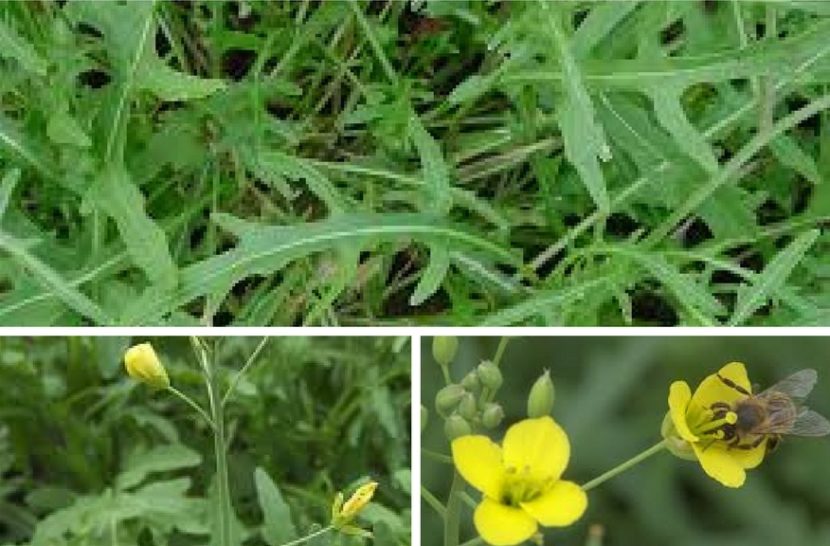Rucola selvatica
Cultivation
It grows best in the cooler part of the year. To have young leaves available for longer time, sow in smaller amounts once a week.
Distance between plants
It doesn’t need its own garden bed; it can be sown with lettuce or radicchio. If you do plant separately, leave 15 cm (6 in) distance between the rows and sow closely together in a row.
Location
Sunny.
Amount
To 50 plants or a 30-60 cm (12-24 in) long row per person.
Time of planting
Grows outside throughout the whole year if the temperature is at least 5 °C (41 °F), in unheated greenhouses or in pots. When the temperature is right it can germinate in only 5 days, otherwise it needs approx. 10 days.
Fertilization
Not needed.
Watering
Water regularly in dry season.
Rucola’s good neighbors
Bush beans, carrots, celery, beetroot, lettuce, cucumbers, onion, potato, spinach.
Rucola’s bad neighbors
Brassica vegetables.
Diseases and pests
Flea beetles like to attack it and cause little holes in the leaves. They don’t need to be repelled, but can be caught to adhesive boards that should be set low above the plants and moved every second day.
Rucola’s storage
Cut regularly when needed. Cut of the young leaves and leave the central ones. You can pick the leaves even when the plant blooms, if you like their stronger taste.
Food
Eat raw. It as a characteristic, sharp taste, which is milder in young leaves and stronger in drought. They contain a lot of fiber, vitamins C and A and some iron.
Important
Rucola is the name of two plants, the wild and the cultivated one. The cultivated one (eruca sativa), called also salad rocket or arugula, grows somewhat slowly, its leaves are less serrated, its blooms are creamy white and its taste weaker. The wild arugula (rucola selvativa) can survive winter well, has yellow blooms and stronger taste after each cutting.
Miscellaneous
It is very easy to cultivate, grows quickly and in all types of soil, therefore it is good even for beginners in gardening. It is a relative of radish, mustard and brassica vegetables. It grows throughout the year and is an important source of vitamin C in winter.

